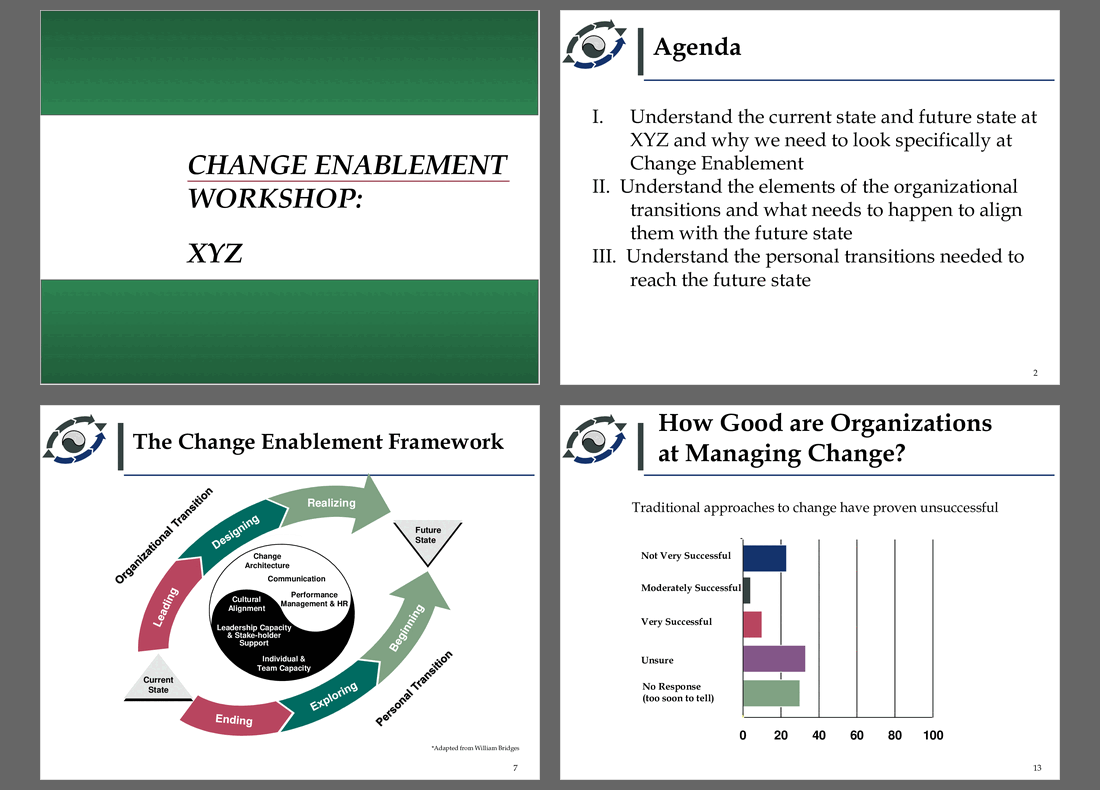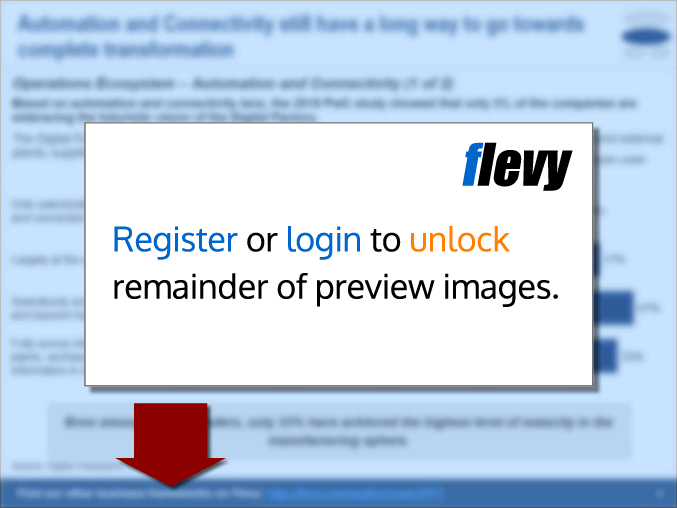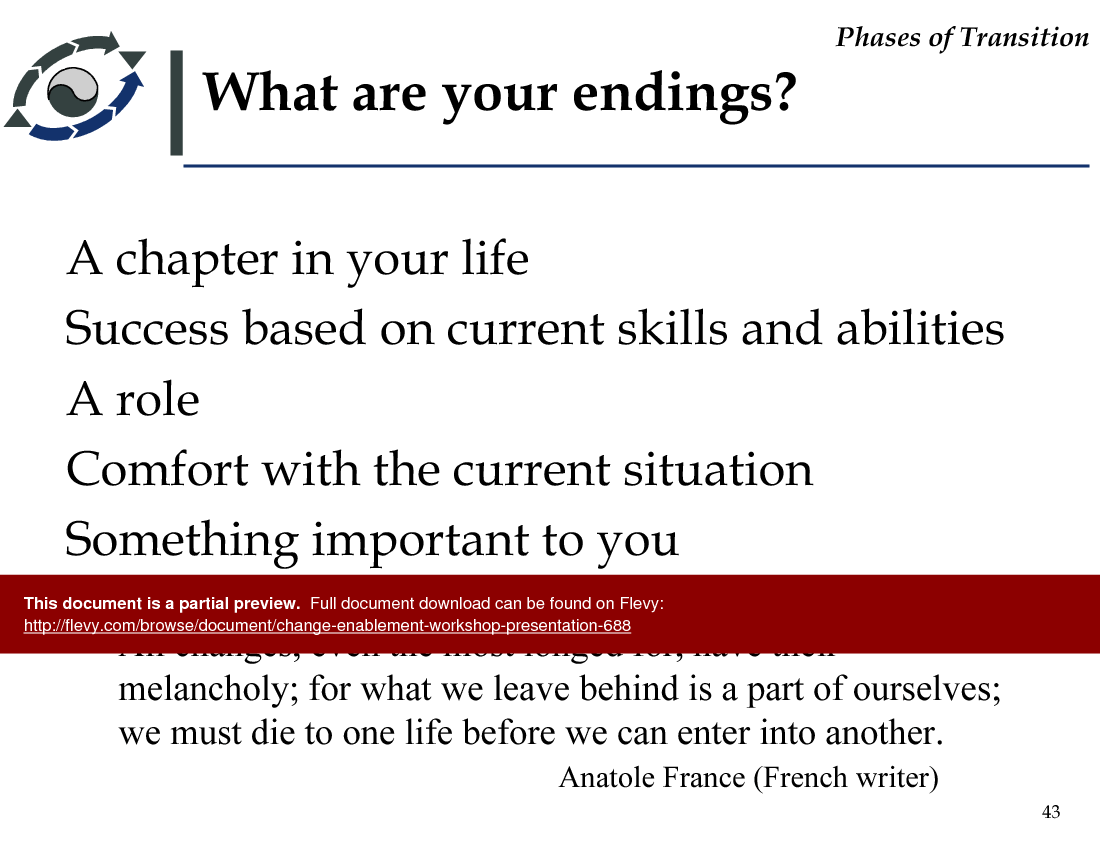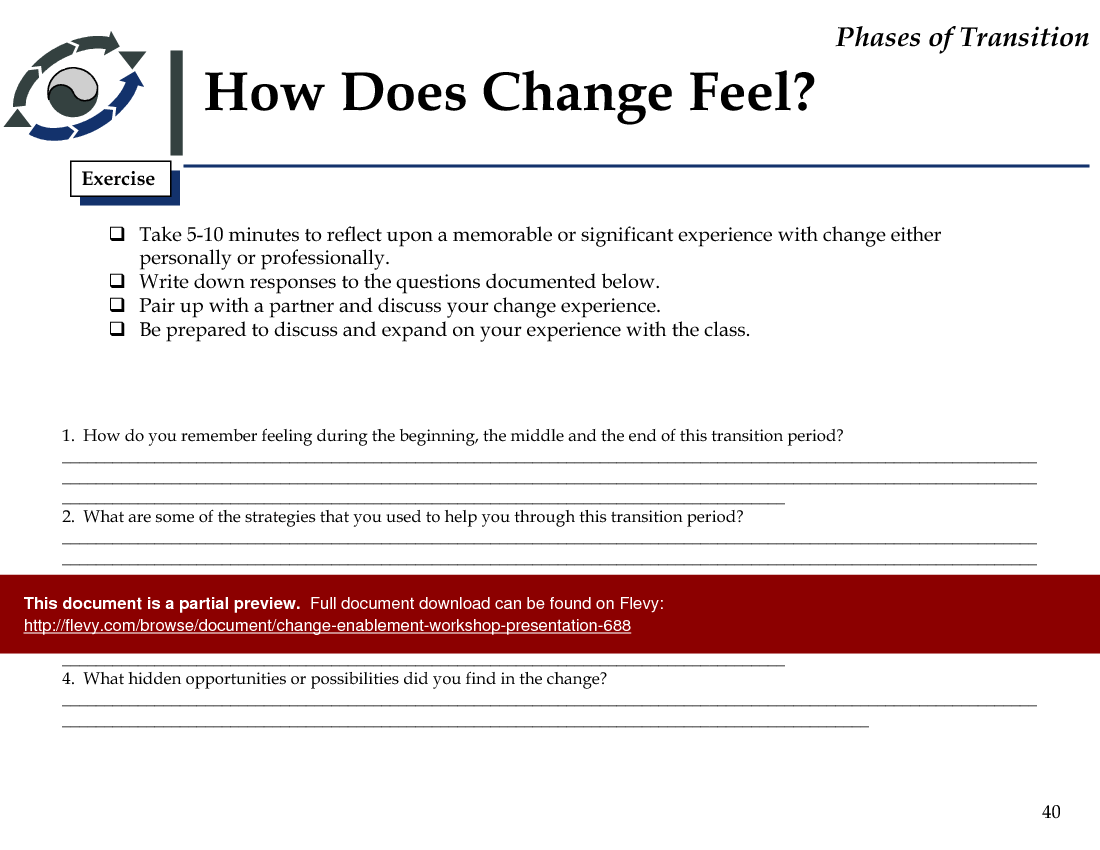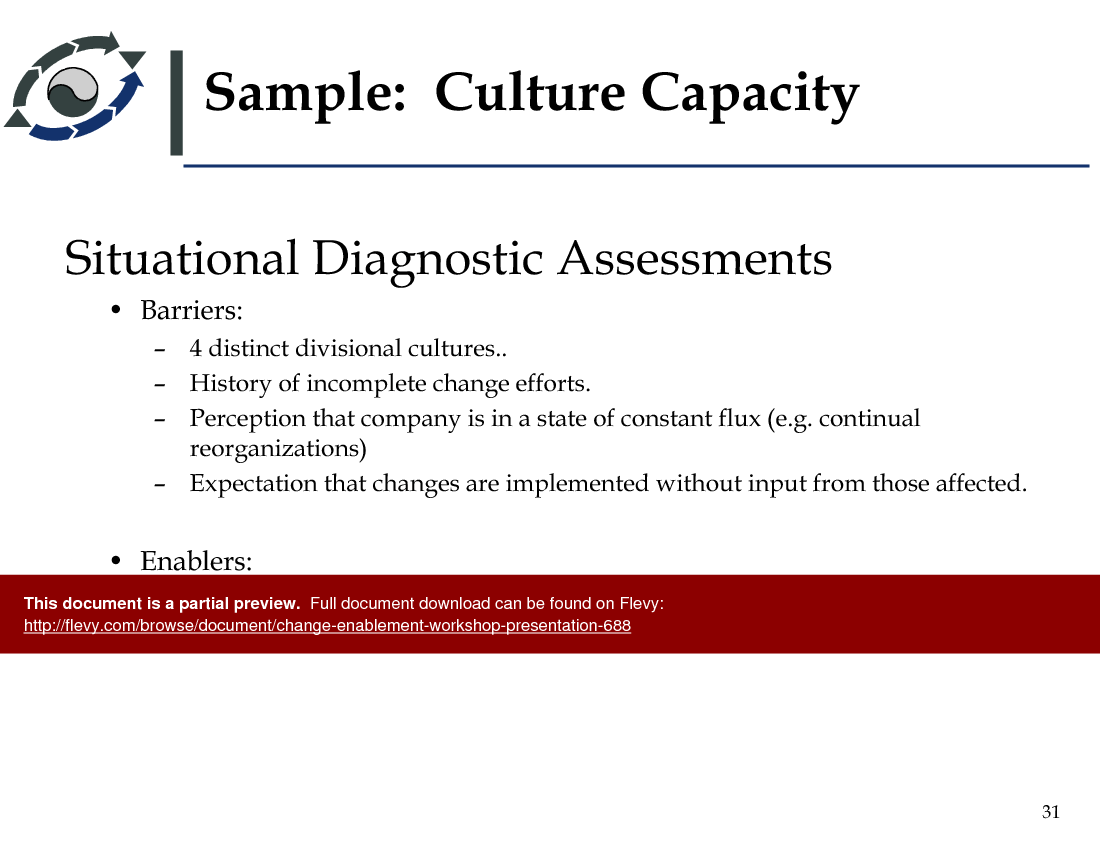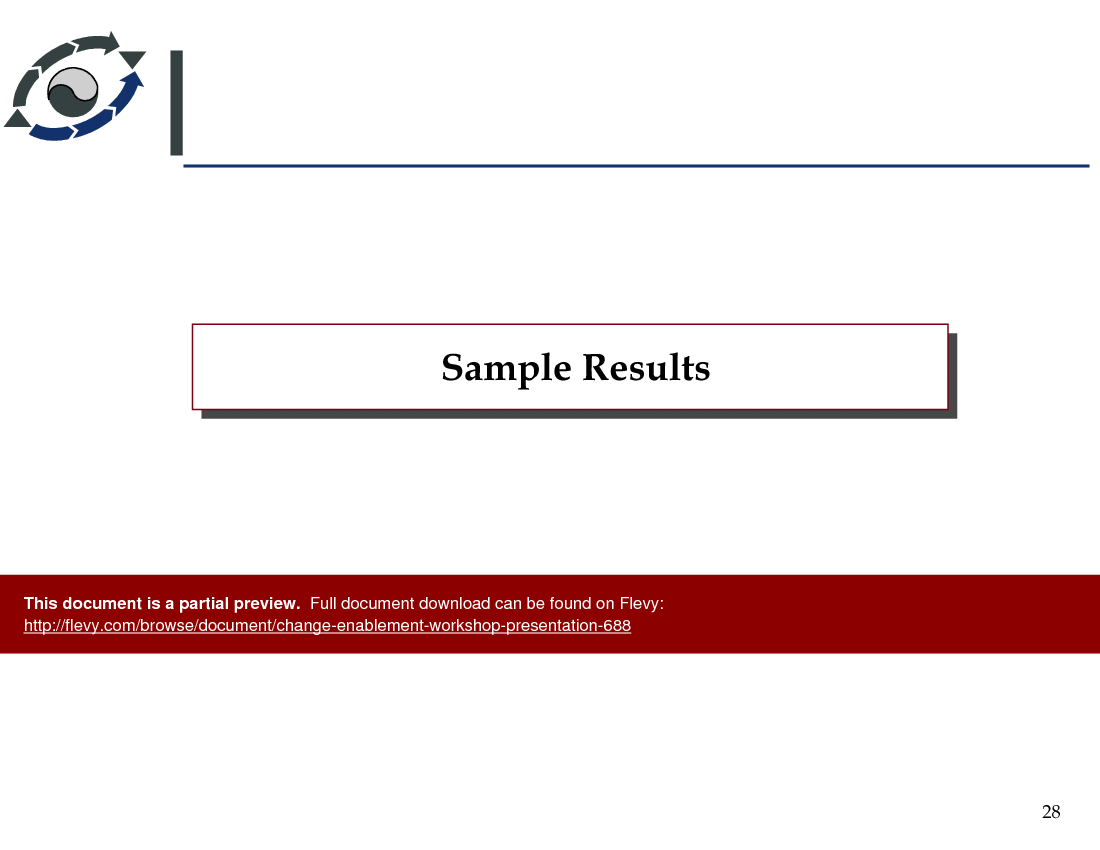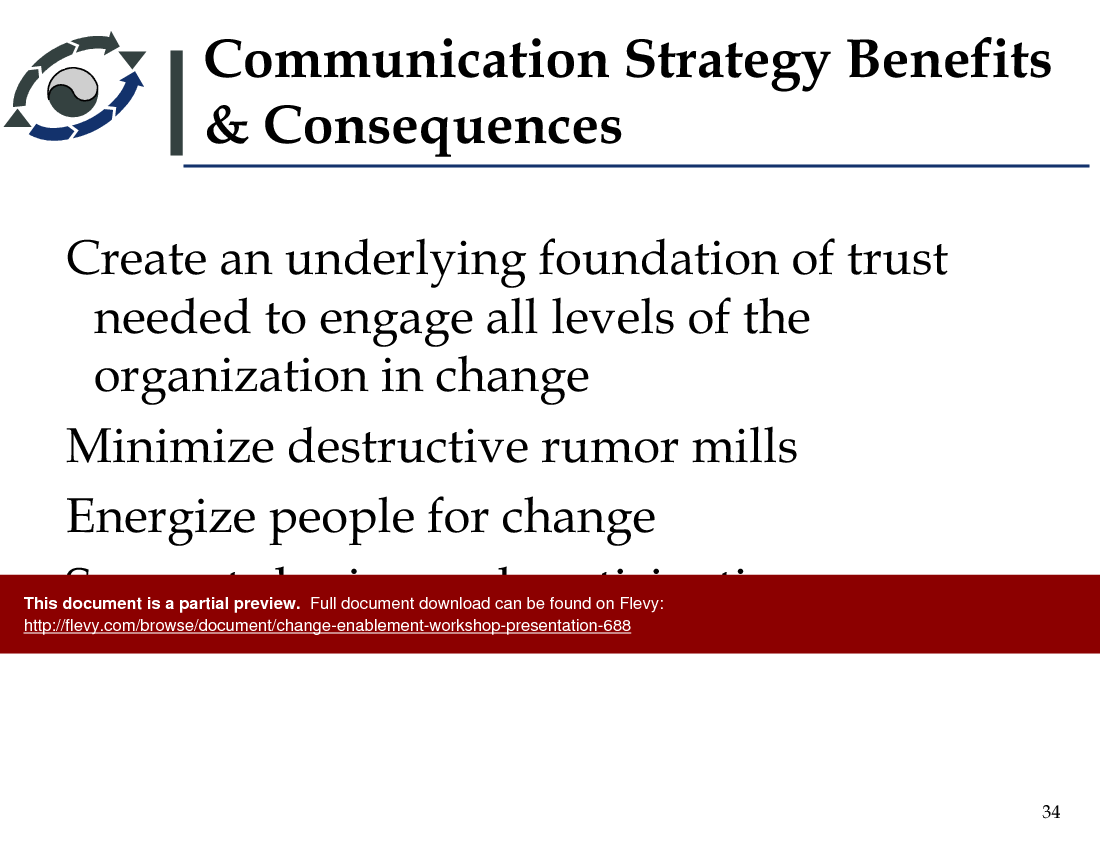Change Enablement Workshop Presentation (PowerPoint PPT Slide Deck)
PowerPoint (PPT) 97 Slides
CHANGE MANAGEMENT PPT DESCRIPTION
The objectives of the workshop are to
• Understand the current state and future state at XYZ and why we need to look specifically at Change Enablement
• Understand the elements of the organizational transitions and what needs to happen to align them with the future state
• Understand the personal transitions needed to reach the future state
This Change Enablement Workshop Presentation delves into the intricacies of organizational transitions, providing a detailed framework for leading, designing, and realizing change. It emphasizes the importance of cultural alignment, leadership capacity, and stakeholder support. The workshop includes exercises to help participants reflect on personal experiences with change, understand the business of paradigms, and assess the current state of their organization.
The presentation also addresses the common reactions to change, such as stress, guilt, and anxiety, and provides strategies to manage these emotions effectively. It highlights the phases of transition, from the ending of old ways to the new beginnings, and offers actionable steps to guide organizations through these phases. The document includes sample results from situational diagnostic assessments, showcasing potential barriers and enablers to change.
Communication is a critical component of the workshop, with sections dedicated to building a communication strategy, identifying stakeholders, and understanding the benefits and consequences of effective communication. The presentation also covers the development of change agents, training them to understand transitions and providing ongoing support and feedback.
The workshop also emphasizes the importance of organizational leadership during change, outlining steps to create a compelling case for change, establish a vision for the future, and coach people through the transition. The presentation concludes with insights into effective communication and the role of leadership in influencing others.
Got a question about the product? Email us at support@flevy.com or ask the author directly by using the "Ask the Author a Question" form. If you cannot view the preview above this document description, go here to view the large preview instead.
Source: Best Practices in Change Management, Workshops PowerPoint Slides: Change Enablement Workshop Presentation PowerPoint (PPT) Presentation Slide Deck, Documents & Files
CHANGE MANAGEMENT PPT SLIDES
